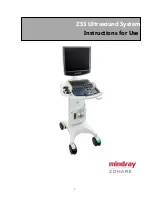
Manual 2100-034G
Page
21 of 21
All Units – Troubleshooting
Your Bard product is made to operate for many trouble-free years if installed properly and maintenance practices
are followed. Be sure to verify that all filters are clean, and condenser coils are free of dirt and debris. Often these
items may look clean at first, but upon closer inspection, show signs of dirt and debris build-up. New units on new
structures may have dirt and dust in filters from the building construction process.
Thermostats and unit controllers often contain vent holes for proper sensor measurement inside the device. Make
sure the thermostat or controller are not full of dirt and dust from building construction or years of use.
Verify all requirements in the installation instructions and specification sheets are met. Unit voltages, airflow
clearance requirements and clean unit power without brownouts or spikes play a critical role in unit performance.
If 208 VAC power is supplied to the unit, the 208V tap must be used on the 24 VAC transformer located inside the
control panel. Common sense must also be used when installing the unit in an environment that may put the unit at
risk of improper operation.
Helpful Hints and Good Operating Practices
The following information will help you enjoy the full comfort and benefits of your Bard cooling and heating system,
maximize the performance and efficiency and help extend the life of your system.
1. Always keep the equipment in peak operating condition with routine scheduled maintenance, especially for the
air filters, and to assure a clean outdoor coil.
2. For most efficient operation, set the thermostat at the temperature you prefer and then let it take control. If any
changes to the settings are required, they should be made in small adjustments and the system be allowed time
to respond. Rapid changes either up or down should not be done.
3. Setting the thermostat very high does not make the system heat faster and setting it very low does not make it
cool faster.
4. It is not recommended to turn the system "Off" then back "On" when you need it. This can allow temperature
and humidity to build up in warm weather conditions and force the system to run continuously to try and catch
up. If the building is to be unoccupied for a lengthy period, it is best to adjust the thermostat to a reasonable
higher (or lower—depending on the season) setting rather than turning it completely off. Upon return, the inside
conditions will not be totally out of control and recovery time to desired conditions would be much shorter.
5. Airflow inside the room or building is very important. Keep all supply registers open and all returns free and
unrestricted. Avoid placing objects in areas that will hinder unit airflow. The heating and cooling system is
designed to have a certain amount of airflow for proper operation. Therefore, closing off registers, in unused
rooms as an example, could reduce airflow below acceptable levels and should not be done without review by
your service company who can assess the overall situation and advise you accordingly.
6. Heat pumps, especially air-to-air heat pumps, may have the system (compressor) run continuously at lower
outdoor temperatures, and this is normal. The heat pump (compressor) mode is controlled by the beginning
stages of the thermostat and delivers the most efficient heat. As the outdoor temperature drops off, the heat
pump mode heat will also diminish (because there is less heat in the outdoor air to absorb) and must be
supplemented by additional electric heat stages, which are not as efficient as the heat pump. The thermostat
automatically controls everything and the backup heat will only operate on demand as needed to maintain the
desired temperature.
7. The thermostat or controller is the user's primary connection to the system so it is very important to have a
thorough understanding of how it works and how to use it properly. Have your installer or service company
explain and demonstrate proper operation of the controls.
8. Make sure you thoroughly understand how the heating and cooling system itself is intended to operate and
what to expect from it. Have your installer or service company explain and demonstrate proper operation of the
heating and cooling system.
Troubleshooting
Troubleshooting
Summary of Contents for 11EER WA Series
Page 2: ......
Page 24: ......
Page 30: ...Manual 2100 479 Page 6 of 11 FIGURE 1 TYPICAL AIR CONDITIONING SYSTEM COOLING CYCLE MIS 369...
Page 31: ...Manual 2100 479 Page 7 of 11 FIGURE 2 TYPICAL HEAT PUMP SYSTEM COOLING CYCLE MIS 368...
Page 36: ......
Page 81: ......
Page 86: ...Manual 2110 1452G Page 5 of 17 This page intentionally left blank...
Page 90: ...Manual 2110 1452G Page 9 of 17 This page intentionally left blank...
Page 99: ......
Page 102: ......
















































